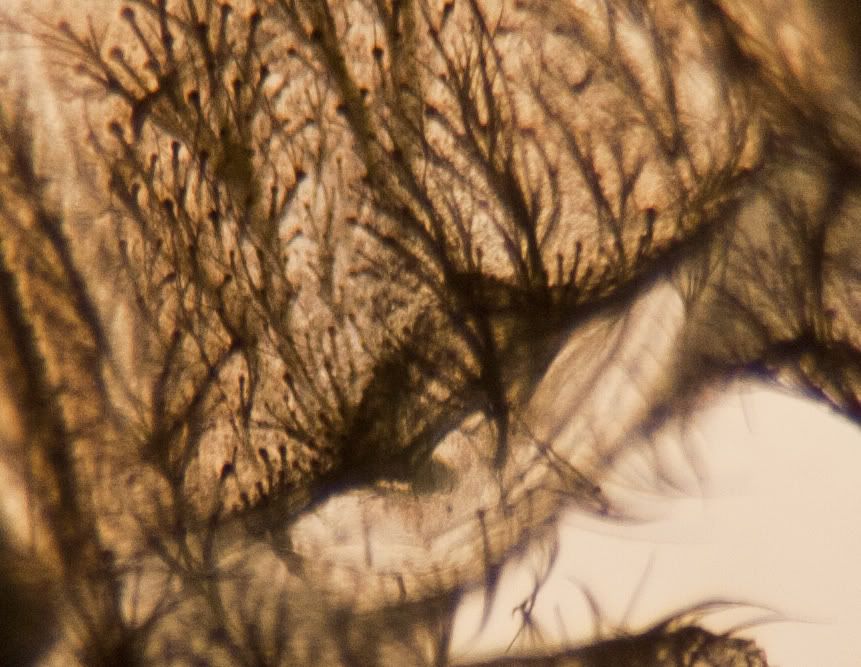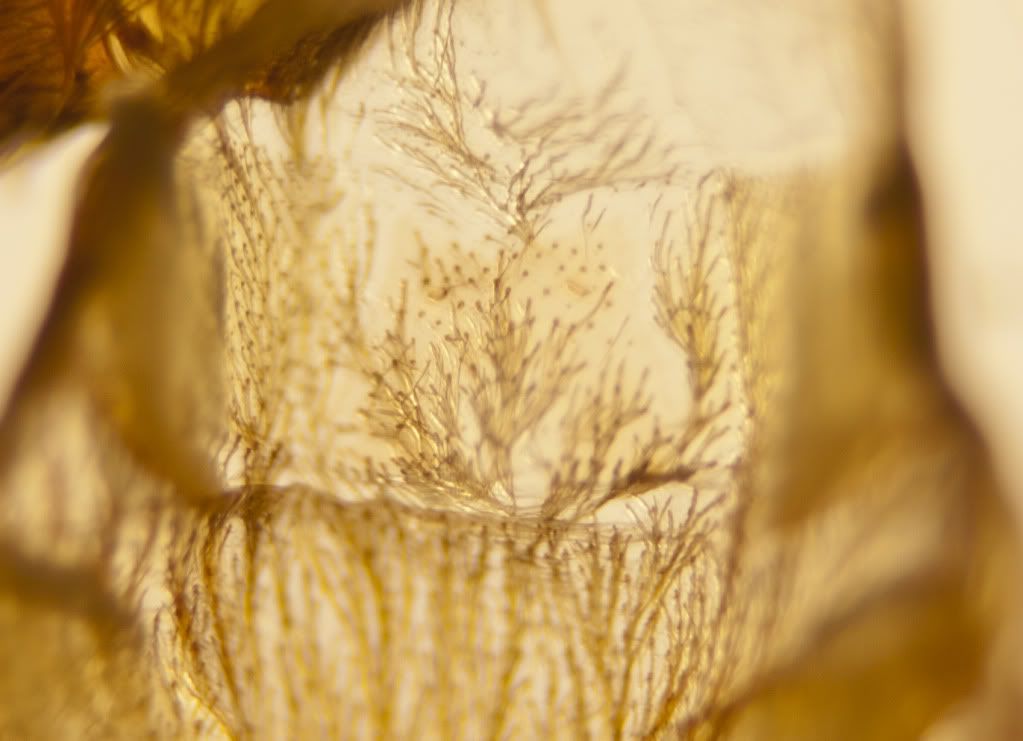- Joined
- Apr 22, 2009
- Messages
- 1,295
Hey Guys
So i've been using this method for a while with great success, and just thought I'd take the time and actually type up exactly how I go about it.
Before we start, the easiest way to do this is through a light microscope of some description, but if like me you don't have one, here's the method I use.
Equipment:
1. DSLR camera (I personally use a Canon 7D, but i've tried this on the 1000D)
2 . Standard kit lens usually 18-55mm or there abouts
3. Cheap ebay macro filters (cost 10 dollars)
4. Cheap ebay extension tubes (also about 10 dollars too)
5. Tripod as the working distance is extremely small.
6. Small transparent container of sorts to use as a stage
7. Fine point forceps to manipulate moult

Method:
Prep the moult: If you're lucky enough to catch your little one moulting, pinch the moult as soon as you can without disturbing the sling. Stretch out the book lungs part before it dries together. If your moult is a little older, soak it in soapy water first (i find just cutting off the abdominal section of the moult easier than dealing with floppy legs ets)
Lay the moult out on the stage you're using.
Setup the camera->extension tubes->lens->macro filters and place in an area of good light. (Preferably a lamp shining almost straight down onto the moult as you want bounceback light to pass through the moult into your lens - hence what the stage is for)
Manually position and focus the camera on the desired area. This can take some time as my working distance with this rig is about 5mm. (Yes i want a proper macro lens, thus far i haven't acquired one, although the working distance would be far easier)
Snap photo and crop out the bit you want - fiddling with contrast can often help to bring it out more.
Results:
N chromatus 4/5th instar moult:

Image of primitive spermathecae + outlined for those not sure what they're looking at


As you can see, my little one is a FEMALE! :clap:
Thus with relatively inexpensive additions to a regular DSLR it's possible to sex rather small slings.
I hope someone finds this useful, and I welcome comments and questions
Bryn
So i've been using this method for a while with great success, and just thought I'd take the time and actually type up exactly how I go about it.
Before we start, the easiest way to do this is through a light microscope of some description, but if like me you don't have one, here's the method I use.
Equipment:
1. DSLR camera (I personally use a Canon 7D, but i've tried this on the 1000D)
2 . Standard kit lens usually 18-55mm or there abouts
3. Cheap ebay macro filters (cost 10 dollars)
4. Cheap ebay extension tubes (also about 10 dollars too)
5. Tripod as the working distance is extremely small.
6. Small transparent container of sorts to use as a stage
7. Fine point forceps to manipulate moult

Method:
Prep the moult: If you're lucky enough to catch your little one moulting, pinch the moult as soon as you can without disturbing the sling. Stretch out the book lungs part before it dries together. If your moult is a little older, soak it in soapy water first (i find just cutting off the abdominal section of the moult easier than dealing with floppy legs ets)
Lay the moult out on the stage you're using.
Setup the camera->extension tubes->lens->macro filters and place in an area of good light. (Preferably a lamp shining almost straight down onto the moult as you want bounceback light to pass through the moult into your lens - hence what the stage is for)
Manually position and focus the camera on the desired area. This can take some time as my working distance with this rig is about 5mm. (Yes i want a proper macro lens, thus far i haven't acquired one, although the working distance would be far easier)
Snap photo and crop out the bit you want - fiddling with contrast can often help to bring it out more.
Results:
N chromatus 4/5th instar moult:

Image of primitive spermathecae + outlined for those not sure what they're looking at


As you can see, my little one is a FEMALE! :clap:
Thus with relatively inexpensive additions to a regular DSLR it's possible to sex rather small slings.
I hope someone finds this useful, and I welcome comments and questions
Bryn








